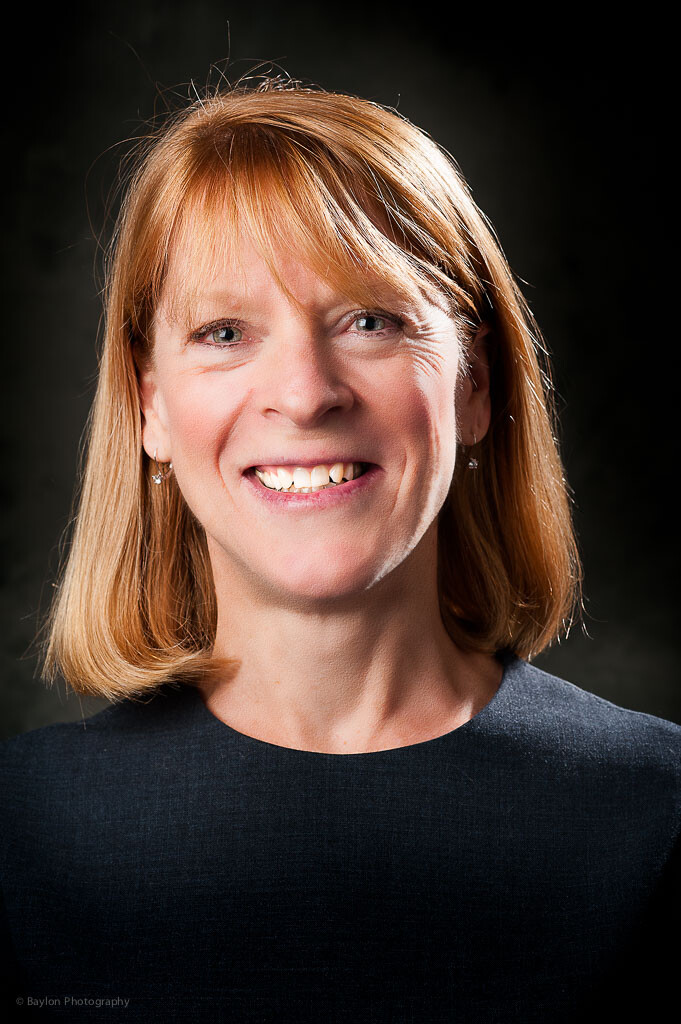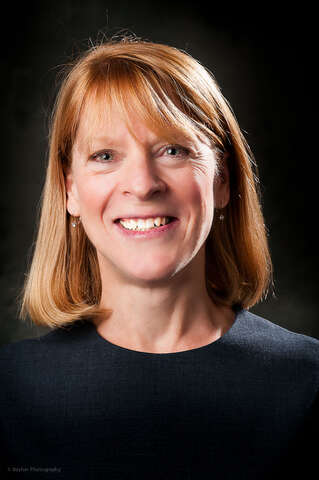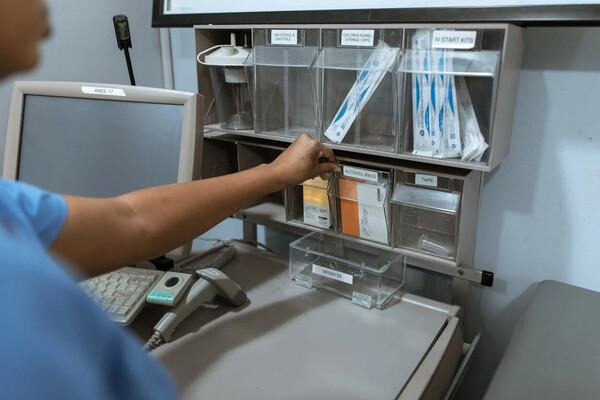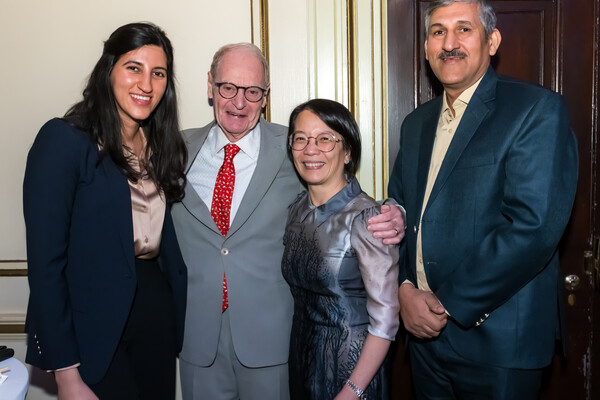Main Second Level Navigation
- Welcome
- Why Toronto?
- History of the Department
- Vision & Strategic Priorities
- Our Leadership
- Our Support Staff
- Location & Contact
- Departmental Committees
- Department of Medicine Prizes & Awards
- Department of Medicine Resident Awards
- Department of Medicine: Self-Study Report (2013 - 2018)
- Department of Medicine: Self-Study Report (2018 - 2023)
- Communication Resources
- News
- Events
The Chair's Activity Report

Gillian Hawker

Chair's Column
The Chair's Activity Report
In the spirit of transparency, I feel it is important to report to you, our faculty and trainees, what your departmental leadership has been up to and what we have planned for the next few years. On June 15th, I gave City-Wide Medical Grand Rounds for this purpose. For those of you who were there, this will not be new. However, as not everyone gets to rounds, I thought it would be good to reiterate in this final newsletter of the academic year some highlights from 2014-16 and our priorities for 2016 and onwards.
These first two years have been spent laying the foundation for the University of Toronto’s Department of Medicine (DoM) to be able to truly function as a “catalyst,” a "multiplier," and a “facilitator” – to enable the whole of our department to be greater than the sum of its hospital and divisional parts. Based on an initial environmental scan, the following needs were identified:
• Develop a platform for effective communication across approximately 1400 faculty and 1000 trainees;
• Build a sense of "pride of place" in the University of Toronto and its Department of Medicine;
• Increase transparency and fairness regarding resource allocations, including salary support, recruitment and leadership appointments;
• Simplify complex processes, e.g. Continuing Faculty Appointment Review and Senior Promotion;
• Acknowledge and address the challenges of balancing clinical care & academic mandates;
• Promote collegial culture and professionalism
• Establish the leadership team and, with that team in place, establish our strategic priorities.
While more work is to be done, let me briefly highlight the actions we have taken to address these foundational needs.
Developing a Platform for Effective Communication
Under the guidance of our "new" staff lead for communications, Jocelyn Lagerquist, a multi-pronged communications strategy has been developed and is being implemented. Beyond our e-newsletter, DoM Matters, Jocelyn has been working with divisional leadership to implement divisional newsletters, communicate with alumni – both former trainees and retired faculty - increase our presence on social media (Twitter @UofTDoMChair), and prepare for the launch of a brand new website this fall!
Having had it pointed out to me that our departmental executive committee was comprised exclusively of Baby Boomers, a GenXer and Millennial were invited to join the executive to help keep us relevant – thanks Sam (Sabbah) and Savannah (Cardew).
Build Sense of "Pride Of Place"
We are fortunate to work in one of the largest and most prestigious universities in the world – with a very impressive history of scientific discovery. Did you know that we are ranked sixth world-wide for clinical medicine? Further, unlike many top ranked medical science institutions, we are relatively rare in having a single medical school and a single Department of Medicine that extends across multiple affiliated hospitals and community sites, with responsibility for one of the most diverse populations in the world. Chances are, if you are interested in ‘X’, there is high likelihood that one or more ‘X’ experts are right here at UofT! We deserve to be proud.
Over the next few years we will be celebrating two major milestones: the 100th anniversary of the establishment of the Sir John and Lady Eaton Professor and Chair in Medicine – the first in the British Empire – in 2019, and two years later the 100th anniversary of the discovery of insulin in 2021.
Big is not always better. Our size and geography make it tough to feel a close connection with the UofT DoM. We are doing our best to change that. We’d like to encourage you to wave the UofT DoM flag when presenting outside Toronto by using the DoM Powerpoint slide and logos (contact Jocelyn at jocelyn.lagerquist@utoronto.ca for these).
We’ve created some swag (sweatshirts, lanyards, keychains and more…) and, thanks to staffers Ashley Bedard and Janine Hubbard, we have ramped up the graduation celebration for residents and fellows. This year the event celebrated 116 graduates with their families at the Isabel Bader Theatre at Victoria College, UofT. It was a lot of fun (see our Department of Medicine FlickR gallery).
Transparency & Fairness
Through multiple meetings, the departmental leadership agreed that we should focus our faculty salary support efforts on the group with least opportunity to generate clinical income, our clinician-scientists (CSs). By doing so, we could increase the amount per CS at recruitment. As our resources are finite, we revised the CS merit review process by which eligible CS faculty (those who do not hold salary support awards) could compete for salary support. All new recruits are provided financial support for five years contingent on successful Continuing Faculty Appointment Review. Led by Kevin Kain and Phil Marsden, a dedicated committee of senior scientists annually reviews all applicants for merit. They assign a CIHR score to each and those with a score ≥ 4 out of 5 are awarded $40K/annum for three years after which they may reapply.
All other financial support of our faculty members is in the form of stipends for University and DoM roles. Job descriptions have been put in place for all such roles, including our departmental division and residency program directors. Stipends are now based on a formula that incorporates the time commitment and level of responsibility the job requires. Leadership position terms have been set at five years, once renewable, with a formal review process in place at five and ten years.
As of July 1 2016, there is now a mandatory requirement for a search for all new full-time recruits as well as for leadership role transitions. All positions are posted centrally at UofT and circulated to the department members for consideration. Requirements for all search committees are being drafted as I write.
Our "new" senior development officer, Chris Adamson, has worked tirelessly with our administrative lead, Clare Mitchell, to review our existing endowments and trusts so we have a much better understanding of what we have and how it might be used to help our faculty and trainees. As the best way to find new donations is by taking care of prior donors, called stewardship, Chris has also put in place a process to ensure donor stewardship at the highest level by our Chair holders and others. I must say, raising funds isn’t my favourite activity, but Chris makes it seem easy (sort of!)
With his help, we have over $1.8M in gifts pledged since May 1, 2015, of which seven are from first-time major gift donors. New divisional chairs have been established in GIM, Respirology and Geriatrics; two of our PICs, Kevin Imrie and Tom Parker, now hold Chairs as a result of the DoM matching donor funds at their hospitals.
Simplify Highly Complex (and sometimes overly bureaucratic) Processes
A new DoM Appointments Committee (DAC) was established with the support of new staffer Shiva Vaghei. This team works like a well-oiled machine to get requests for initial appointment and Junior Promotion (lecturer to assistant professor) reviewed in record time. Under Tom Rylett, who joined us most recently, the Continuing Faculty Appointment Review (CFAR) processes continues to be streamlined – less paperwork, clearer expectations. A new and simpler Academic Planning Document, and a new and more comprehensive approach to mentorship assignment is coming this fall.
The enormous binders of former senior promotions are gone! As for CFAR, we are doing our best to reduce the paperwork required for Senior Promotion, with the careful attention of staffer Lilian Belknap. This past year, we got rid of "appendices" and standardized referee and candidates’ letters. Referee requests are now being sent from DoM central to reduce the burden on the hospitals.
Academic position descriptions (formerly job descriptions) have been revised. Expectations for appointment at the ranks of lecturer and assistant professor and at Continuing Faculty Appointment Review have been clearly articulated. The original CQI position description, which had morphed into multiple phenotypes, has now been split into three position descriptions: CQI (20-30% protected time); CI-QI; and CS-QI.
Ongoing is a deep dive into the status of our fellowships – clinical and research. There are approximately 354 fellowships offered in our department! We are reviewing these with our DDDs to ensure the educational objectives are clear, funding meets regulations, PGME sign off is being obtained correctly, and most importantly, the fellows are receiving an outstanding experience.
Promote Collegial Culture and Professionalism
We analyzed and shared the results of our 2015 Faculty Survey (52% response rate) with departmental members (via monthly DoM Matters) and leaders (PICs and DDDs). 89% of respondents reported agreeing with the statement that colleagues at their institution "interact respectfully." However, only 59% were confident that they could take action to address incivility without fear of reprisal. Comments included, “…brilliant minds are allowed to work here despite bad behaviours, especially if that behaviour is only towards some individuals and not all,” and, “Mechanisms exist for very egregious behaviour. A more informal system for more every day challenges…may be helpful.”
85% indicated being satisfied, overall, with their career. Career satisfaction was significantly related to satisfaction with each of: work-life balance (52% satisfied); teaching responsibilities; opportunities for professional development and mentorship; and collegial culture. These findings indicate a need for greater attention paid to work-life balance and to collegial culture and professionalism. Given this, consistent demonstration of professional behaviour is now a requirement for successful CFAR and work is underway to understand and address facilitators and barriers to professional behaviour.
Retirement / Late Career Transition
Between 2000 and 2015, the mean age of full-time faculty increased from 45 to 51 years. Over the same time period, the mean age of full-time faculty at recruitment rose from 34 to 36 years. Multiple potential explanations exist, including the end of mandatory retirement at age 65 years. So we asked about retirement in the faculty survey. As we have reported previously in the November 2015 edition of DoM Matters, 52% agreed that, “Overall, retirement has a positive connotation in my mind,” and 19% agreed with the statement “I do not ever plan to fully retire”. Most respondents (89.5%) preferred gradual transition to retirement (over one to ten years). One respondent noted, “I’d like to participate in succession planning…there should be a five year period during which I start transitioning clinical responsibilities to the next person and provide mentorship.”
Formal mentorship about retirement/late career transition was identified as an unmet need. A subgroup of the new Mentorship, Equity and Diversity Committee will take on addressing this need.
Gender Diversity
While on average 50% of trainees are female; the proportion of women residents varies widely, from 31% in Cardiology to 75% in Medical Oncology. Among our full-time faculty, only 36% are female (16% in Cardiology to 63% in Rheumatology). Are these numbers concerning? We don’t know, but aim to find out.
Collectively, these findings and others identified a major need for leadership in the areas of Mentorship, Equity & Diversity (MED). We are fortunate that Dr. Sharon Straus agreed to step into a new Vice-Chair role in MED. You will hear more about what Sharon and her team have planned in the coming months.
Establish the Leadership Team and our Strategic Priorities
Our Vice-Chairs are now all in place and we have an amazing leadership team! Dr. Arno Kumagai, educational scholar in humanist medicine, has joined us from Ann Arbor Michigan as our Vice-Chair, Education.
Dr. Michael Farkouh has stepped into the role as Vice-Chair, Research and is ably supported by a new-ish full-time administrative research lead, Joanna King. Mike is a talented clinical trialist, cardiologist, and bridge builder extraordinaire!
Dr. Sharon Straus, talented clinical epidemiologist/meta-analyzer, geriatrician and world-class mentor, has taken on a new role in our department – that of Vice-Chair, Mentorship, Equity and Diversity.
Dr. Kaveh Shojania, formerly Director of Quality and Innovation for the department, has been promoted to Vice-Chair, Quality and Innovation. A gifted QI scientist and editor of BMJ Quality, Kaveh has been instrumental in leading the development of a talented cadre of QI faculty.
Dr. Charlie Chan has been Vice-Chair, Finance, for many years now; this role has been critical as an advisor and strategist for our department. While he is ready to give the role up, we hope to hold on to him a little longer – sorry Charlie!
This past fall, the departmental leadership – including the incoming Vice-Chairs – met in Niagara-on-the-Lake for a couple of days to discuss key contextual factors that we must consider as we plan our next steps, flesh out our vision, and begin to frame our strategic priorities for the next three to five years. This is what transpired at this retreat and over the ensuing months.
Key Contextual Factors Influencing our Work
• Shifting population demographics: ↑ numbers living with multiple chronic conditions, which is having profound & unparalleled social, economic, and human implications;
• Healthccare funding and system: Healthcare is a complex adaptive system yet remains single disease and single provider focused → waste and confusion; there is a need to shift from disease- centred to patient-centred care provided by integrated healthcare teams and residency training must prepare physicians to deliver this care with others;
• Technology revolution (information, biotech): EMRs have not resulted in better computerized decision support; they remain largely institutional and, as a result, vast amounts of knowledge have not been translated to better patient care;
• Patient expectations: particularly in the setting of multi-morbidity, patient-defined priorities are highly relevant meaning that physicians must learn and innovate outside the traditional evidence-based model;
• Physician expectations: greater work-life balance; phased retirement;
• Research landscape: disappearance of mid-career salary awards; CIHR foundation scheme still in ‘pilot’ mode – federal government intervention recommended;
• Professionalism (social accountability): physicians are increasingly accountable for the costs and outcomes of the care they deliver and must be stewards of our finite health care resources;
• Competency based education: will require more time spent by faculty with trainees observing and providing feedback on patient care activities.
I believe we have the potential to LEAD healthcare transformation…
Our Vision: We meaningfully impact health through international leadership in education, research and the translation of new knowledge into better care and health outcomes.
Our Strategic Priorities:
1. Ensure that the perspectives and experiences of our patients and their families drive our work
2. Promote equity, diversity and professionalism
3. Be socially accountable and steward health care resources
4. Align physician training to meet future population needs
5. Promote the generation and translation of new knowledge to impact health
6. Recognize the contributions of all our faculty members, our
inter-professional colleagues and both our hospital and university identities
7. Enhance mentorship across the academic lifespan, optimize faculty members’ well-being and academic success
8. Raise funds to achieve our goals
Over the fall, you will see how these priorities are addressed through our training, research, QI, and MED mandates.
With that, I wish you all a restful and restoring summer wherever you may be! Enjoy!!



